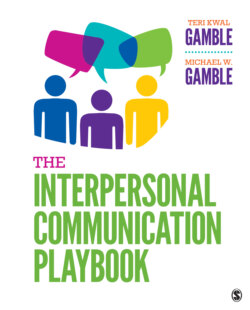Читать книгу The Interpersonal Communication Playbook - Teri Kwal Gamble - Страница 115
На сайте Литреса книга снята с продажи.
Do We Perceive the Same Social Reality?
ОглавлениеOur lack of agreement about what we see is particularly apparent when we consider art. For example, take the work of performance artist Marina Abramovic. Would you call a person sitting still in a room “art”? The fact that answers to this question vary illustrates a key aspect of perception—different people do not always view the same situations in the same ways. For the same reason, people do not agree on the meaning of Edvard Munch’s painting The Scream, pictured here. Our perception is a consequence of who we are, where we are, and what we choose to see.
Culture, race, age, gender, geographic location, and life experiences combine to create perceptual gulfs between us and those whose culture, race, age, gender, geographic location, and life experiences differ from ours. Confronted with issues such as race relationships, gender equity, an economic crisis, and the political divide, many of us see different realities. It is not uncommon for our perceptions of events and people to conflict. In fact, differences in how we see, hear, taste, smell, or feel specific stimuli—that is, differences in how we perceive—occur all the time. Is it because we cannot perceive what is really there? Is it because we perceive what we want to perceive? Is it because we never experience the exact same reality as anyone else?14
As we learn more about the perception process, we prepare ourselves to handle the interpersonal problems that perceptual variations and disagreements present. By exploring why we experience the same stimuli differently, we may better understand why we think and act differently as well. Only by getting behind the eye of the “I” can we come to understand why “where we stand depends on where we sit.”15
What does The Scream mean to you?
The Scream by Edvard Munch, 1893. Wikimedia Commons/WebMuseum at ibiblio.
